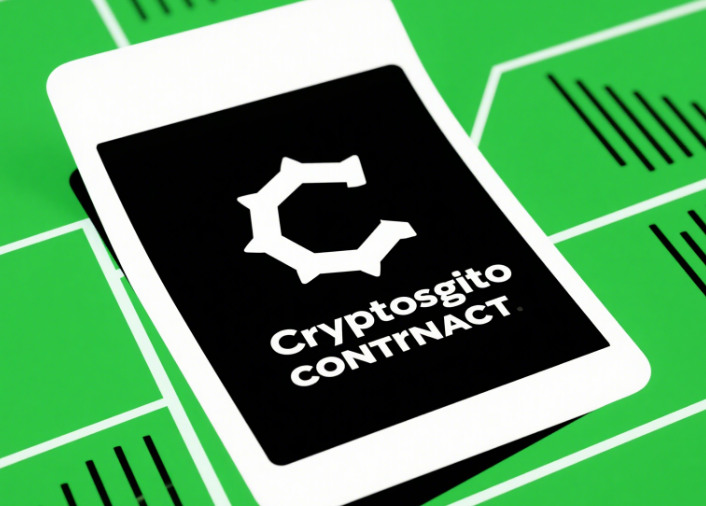In the dynamic world of blockchain technology, crypto smart contracts have emerged as the backbone of innovation, enabling trustless transactions and automating complex agreements across industries. These self-executing programs, powered by blockchain, are reshaping sectors like decentralized finance (DeFi), supply chain management, and healthcare, while posing critical challenges in security and regulation. This article explores the inner workings, real-world applications, and future potential of crypto smart contracts, providing insights to stay ahead in the ever-evolving crypto landscape.
1. What Are Crypto Smart Contracts?
Crypto smart contracts are digital protocols that automatically enforce the terms of a contract without intermediaries. Built on blockchain networks like Ethereum, Solana, or Polkadot, they execute predefined actions when specific conditions are met, such as transferring funds or releasing data. For example, in DeFi, a smart contract can automatically disburse loans when collateral is deposited, eliminating the need for banks.
Key features include:
- Decentralization: Operate on peer-to-peer networks, reducing reliance on centralized authorities.
- Immutability: Once deployed, contract code cannot be altered, ensuring transparency and security.
- Automation: Execute actions instantly, minimizing human error and delays.
Smart contracts are written in programming languages like Solidity (Ethereum) or Move (Aptos), with code audited to prevent vulnerabilities.
2. How Do Smart Contracts Work?
The process begins with code deployment on a blockchain. Users interact with the contract by triggering conditions (e.g., sending funds). The blockchain network validates the transaction, and if conditions are met, the contract executes automatically. For instance:
- Escrow Services: A buyer sends funds to a smart contract. The contract holds the funds until the seller confirms delivery, then releases payment.
- NFT Royalties: Artists earn royalties automatically each time their NFT is resold.
This automation reduces costs and enhances efficiency, but it also demands robust security measures to prevent exploits like the 2016 DAO hack, where a coding flaw led to $50 million in losses.
3. Key Use Cases of Crypto Smart Contracts
a. Decentralized Finance (DeFi)
Smart contracts power lending platforms (e.g., Aave), decentralized exchanges (DEXs like Uniswap), and yield farming. In 2025, cross-chain interoperability solutions like Polkadot and Cosmos enable assets to move seamlessly between blockchains, expanding DeFi’s reach. For example, Stabull Finance bridges liquidity pools across Ethereum and Polygon, facilitating low-slippage swaps.
b. Supply Chain Management
Blockchain-based smart contracts track goods from production to delivery. In 2025, a leading automotive alliance used smart contracts to share real-time data on component availability, reducing inventory costs by 19% .
c. Healthcare
Smart contracts secure patient data and automate insurance claims. For instance, a patient’s medical records are encrypted on-chain, and insurers access them only with explicit consent. In 2025, a pharmaceutical company used smart contracts to track vaccine shipments, ensuring compliance with temperature requirements .
d. Gaming and NFTs
NFT games like Splinterlands use smart contracts to manage in-game assets and player economies. In 2025, the NFT gaming market is projected to reach $550 billion, driven by play-to-earn models and true ownership of digital assets .

4. Security Risks and Mitigation Strategies
Despite their benefits, smart contracts face vulnerabilities:
- Code Bugs: Errors like integer overflows or reentrancy attacks (e.g., the 2016 DAO hack).
- Oracle Manipulation: Reliance on external data sources (oracles) for real-world inputs, which can be exploited.
- Regulatory Challenges: Compliance with evolving laws, such as the EU’s Markets in Crypto-Assets (MiCA) regulation.
Solutions:
- Audits: Third-party firms like Certik and OpenZeppelin conduct manual and AI-driven code reviews .
- Decentralized Oracles: Projects like Chainlink provide tamper-proof data feeds.
- Quantum-Resistant Cryptography: Protocols like QRL use algorithms to withstand quantum computing threats .
5. The Future of Crypto Smart Contracts
a. Cross-Chain Interoperability
Platforms like Polkadot and Cosmos are creating a multi-chain ecosystem, allowing smart contracts to interact across networks. For example, Polkadot’s relay chain connects parachains, enabling assets from Bitcoin and Ethereum to be used in decentralized applications (dApps) .
b. AI Integration
AI-enhanced smart contracts can analyze market trends and adapt dynamically. In 2025, AI tools like DeepSeek+Analytics optimize supply chain decisions, reducing costs by 30% .
c. Regulatory Compliance
Governments are adopting frameworks for smart contracts. The U.S. SEC’s crypto task force and the EU’s MiCA regulations aim to balance innovation with consumer protection .
d. Scalability Solutions
Ethereum’s 2025 roadmap includes sharding and rollups, aiming to process 100,000+ transactions per second (TPS) and reduce fees by 90% .
6. Why Bitora Leads in Crypto Smart Contract Insights
At Bitora, we empower users with cutting-edge analysis of crypto smart contracts. Our platform offers:
- Real-Time Data: Track DeFi protocols, NFT trends, and cross-chain activity.
- Security Audits: Partner with top firms to ensure contract integrity.
- Educational Resources: Guides on coding, auditing, and regulatory compliance.
Stay ahead with Bitora’s crypto insights and unlock the full potential of decentralized innovation.
Conclusion
Crypto smart contracts are revolutionizing industries by enabling trustless automation and transparency. While challenges like security and regulation persist, advancements in cross-chain interoperability, AI, and scalability are paving the way for mainstream adoption. For up-to-date analysis and actionable insights, visit Bitora—your gateway to the future of decentralized finance.









Leave A Reply